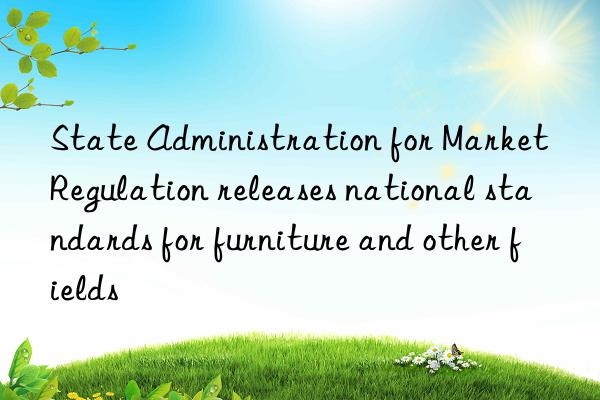
The State Administration for Market Regulation recently held a special press conference on "Standards Shape a Better Life" in Yiwu, Zhejiang, and released a number of national standards. Mainly involved in furniture, textiles, urban construction and other fields.
In the field of furniture, the "Furniture Household Cribs and Folding Cribs - Test Methods" and "Children's Furniture" related to baby products The two standards of "Quality Inspection and Quality Judgment" will significantly improve the quality level of children's furniture products and standardize all aspects of children's furniture, especially the design, manufacturing and sales of household cribs and folding cribs, which will play an important role in ensuring children's health and personal safety. Significance. "customized furniture The two custom furniture standards "Quality Inspection and Quality Assessment" and "Customized Furniture Installation and Acceptance Specifications" put forward requirements for the quality inspection, quality assessment, installation and acceptance of customized furniture for the first time. "Guidelines for the Control of Key Chemical Substances in Furniture Products" Part 1: Wood Furniture” and “Guidelines for the Control of Key Chemical Substances in Furniture Products” The two standards "Part 2: Upholstered Furniture" provide suggestions for the control of key chemical substances in wood furniture and upholstered furniture and corresponding test methods. The national standard "Volatile Organic Compound Release Labeling in Furniture" establishes my country's unified furniture volatile organic compound release labeling, provides reference information for consumers when purchasing furniture products, and solves the problem of asymmetric information on volatile organic compound release in furniture. Protect the right to know about consumption.
In the field of textiles, "Textiles for Tourist Hotels" is a product quality standard that stipulates the term definitions, product classifications, technical requirements and judgment rules for textiles used in tourist hotels. It proposes safety, usability and judgment rules based on the different uses of the products. Specific indicator requirements from multiple dimensions such as consumption experience. "Textiles Evaluation of moisture absorption and quick-drying properties Part 1: Single combination test method" "Detection and evaluation of anti-wetting properties of textile surfaces - Contact angle and rolling angle method" and "Textiles The three standards "Detection and Evaluation of Anti-See-through Performance" belong to the general method standards for testing and evaluating the functionality of textiles. They propose scientific, unified and objective detection and evaluation methods for the moisture absorption and quick-drying properties, affinity/hydrophobicity and anti-see-through properties of textiles. . "Textiles Determination of Polycyclic Aromatic Hydrocarbons" "Determination of Total Boron Content in Textiles" and "Textiles - Determination of Total Boron Content" The three standards "Determination of Benzene Residues" belong to the textile ecological safety testing method standards, which establish a unified and reliable chemical substance trace detection method, and provide technology to respond to foreign regulatory requirements, smooth international trade activities, and meet the needs of textile ecological safety quality control support.
In the field of urban construction, "Sustainable Development of Cities and Communities" "Small Town Sustainable Development Management and Implementation Guide" standard provides the organizational environment for small town sustainable development management and provides a small town sustainable development management system, including planning, task determination, performance evaluation and continuous improvement, to promote urban development. It provides important technical support for sustainable development and meeting the people’s growing needs for a better life.
As of the end of September 2023, my country has formulated and released a total of more than 5,400 national standards for consumer goods covering 11 major categories and 98 categories of national standards for consumer goods classification, forming a national standard system for consumer goods with complete categories, reasonable structure, and strong support. In recent years, the consistency of major consumer product standards in 53 specific industry sectors in 9 major areas with international standards has remained above 95%, and the level of my country's major consumer product standards is basically in line with international standards.



 微信扫一扫打赏
微信扫一扫打赏
